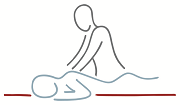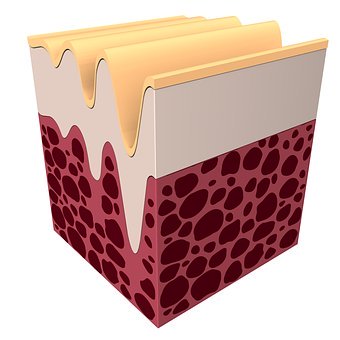Your skin is the largest organ of your body and protects you from bacteria and the outside world. It also helps regulate your body temperature, and lets you feel heat and cold, rough and smooth.
It is made up of three layers – The epidermis, the dermis and the hypodermis.
Wound Healing:
When your skin is broken, through accident or surgery, your body immediately starts healing the wound. Firstly, by limiting blood to the area, then a protein called Fibrin combines with your platelets and blood plasma to form a protective scab. Whilst your skin is regenerating it needs this scab to keep bacteria and infections out of the wound. Try not to pick it, however tempting it may be.
The wound will gradually heal as new tissue starts to grow, starting with the edges of the wound, then working its way toward the centre. Once the new skin has grown back and the underlying wound is healed, that scab will fall off. This YouTube video explains the whole process – How a wound heals itself – Sarthak Sinha – YouTube
If you had a relatively minor cut, one that only harmed the outer epidermis layer, then you are unlikely to experience scarring. If the cut was a deep one that reached the dermis layer, fibrous tissue formation is more likely, resulting in a scar. In general, the deeper the cut, the higher the chance of permanent scarring.
Scarring:
Scar tissue is made up of the same protein (collagen) as the tissue that it replaces but instead of being laid down in a cross-weave pattern, the new tissue fibres are aligned parallel to each other. This is because when we are injured, the body’s quick response team kicks into action and mends the wound as quickly as it can. We are designed that way to protect us from blood loss and infection. Speed is more important than neatness.
This new tissue is therefore not built the same as the original and does not look, feel or perform in the same manner.
Scar tissue tends to not be as strong or as elastic. There are no hair follicles or sweat glands in scarred skin and a lot less blood vessels and lymph nodes. This lack of blood, strength and elasticity means that scar tissue is more likely to get injured in the future and is slower to heal than virgin tissue.
Recovery:
Where Soft Tissues are concerned, the number 1 risk for injury is previous injury. Careful rehabilitation, strength work and Scarwork™ therapy can all help to reduce this risk by enabling the scarred area to perform better and lessen the load on the surrounding tissues.
It can take between three and six weeks to fully heal a deep cut and once the wound is healed, it can take up to two years for a scar to mature and finalise its’ ongoing appearance. Therapy during this time is likely to have a more successful outcome although scars of any age can be improved.
If you have any other questions, please don’t hesitate to get in touch for a no-obligation chat.

